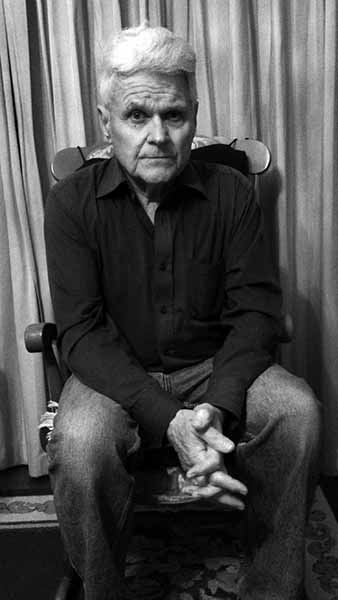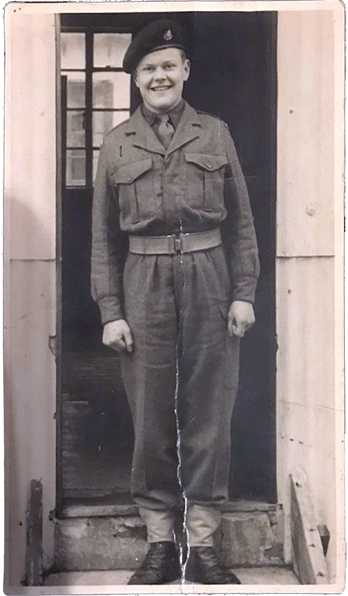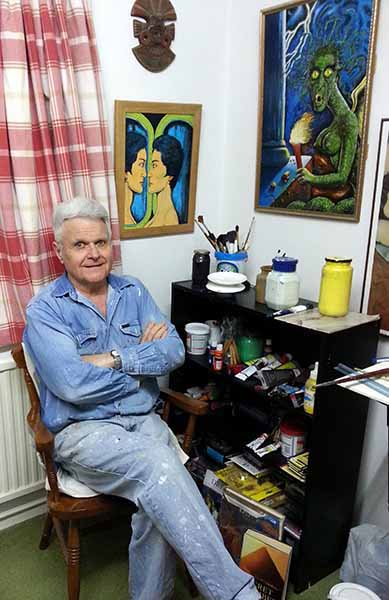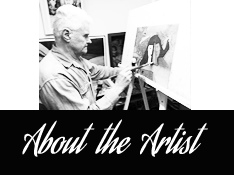About The Artist

As you are here and like most people, you probably want to know more information about the artist – David Kent.
They want to know about his history, his influences and any interesting art-related stories.
If you want to know more, then you are at the correct place read on below.
The Artist’s beginnings
What is known about this talented artist? David H. J Kent was born in Weybridge, Surrey, England in July 1936. David was the middle son of three of his parent’s William and Florence Kent. He was brought up in a poor but happy family. He spent his childhood in a climate of rationing and deprivation. However, like most, he did not realise this at the time, as all his friends and neighbours were all in the same situation.
The Artist Discovers…
The artist David had always been interested in art from a very early age. He was always at the table drawing, sketching or had his nose in an art book. As a schoolboy, he studied old Victorian tomes full of wonderful prints of various illustrators from that time. So how did a boy from war-torn England come to obtain these old Victorian books? Well strangely, they seemed to be very cheap and in plentiful supply after the war. Found in jumble sales (or rummage sales, the name for them at the time). Famous ink-and-pencil artists also caught his eye notably the works of Eric Fraiser, Aubrey Beardsley and later on MC Escher.
The Artistic Medium of choice
Although David, in his time, used most artistic implements and materials that were to hand, one medium stood out. In preference to pencil, he loved drawing in black (Indian) ink with its rich black line and high contrast. He drew cartoon caricature portraits of Hollywood actors, personalities of the time and of his school friends, teachers etc. Many years later, he read that Vincent Van Gogh (his idol in the art world) also loved the English illustrators’. David recalled that Vincent had made a painting of prisoners exercising. They were walking in a circle, based on a striking drawing by the artist Gustav Doré. He, like Vincent, loved these line drawings. David tried in his own style to emulate these superb illustrations.

Schooldays
David was strongly encouraged by his Art teacher Mr Morgan. He said that David had a rare and exceptional talent. Mr Morgan recommended him for an art scholarship at an art grammar school. At the time, this was relatively unheard of for a boy from a poor family to get a scholarship. Unfortunately, it was not-to-be. Although David excelled in art, and he was better than average at history, geography, and English, and adequate at science, he was sadly let down by a complete blind spot in mathematics. Mr Morgan was very disappointed. Ironically this wouldn’t necessarily have been a hindrance in today’s educational environment. Despite not being able to go down the academic route, the art was too strong within him, for this to deter him from this great love.
You’re in the Army Now!
Basic Training 
In 1954, at the age of 18, David was required to perform his two years of national military service. He did his basic training in Farnborough, Hampshire, a satellite of the Aldershot garrison. Afterwards, he then got assigned to a lot of various places around the country. One of the places was beautiful Malvern, (famous for its mineral water).
Remaining Assignment
He spent most of his remaining time in Southampton, a Sapper with the Royal Engineers. After basic training was completed, David, at last, got some free time on his hands. he would do art sketches to pass the time. David finally made quite a lot of friends in the army. He dutifully followed his orders and for the most part, avoided getting into any trouble. Despite the friendships he made, he was not a fan of the army. He did not like the strict discipline, the constant marching, the terrible food (at that time) or the very early mornings.
Royal Engineers Training
In his time in the Royal Engineers, he learned quite a lot. Training in defusing land mines, building Bailey bridges, army manoeuvres and blowing up old derelict railway lines.
Army Friendships
Initially, when he was stationed at Southampton, he made a couple of good friends. His friends were Joe Blackburn (from the Midlands) and Tony Merrick (from Lambeth, London). Initially, David wasn’t particularly popular. He was largely ignored by his peers and by the burly and intimidating navvies, (the lightermen on the Thames river). One of his friends asked him to paint a coloured cartoon character with enamel paint on his plain white ceramic cup. (The cups were a ubiquitous piece of army kit). At the time a lot of the young soldiers loved watching children’s programs, especially the Magic Roundabout!
They were at lunch one day when one soldier spotted the painted cup. He commented that it was great and asked who had done the painted cartoon. His friend pointed at David, the soldier went up to him and asked if he could do one for him and he offered to pay. David Kent, ever the poor businessman (at the time) said “Sure!” and before he knew it, he had ended painting different characters on each cups for quite a lot of the men (over 20 cups!). After that, all the sappers and navvies were really friendly to him.
Art soothes the savage sergeant
There was a sergeant at his barracks, who took a dislike to David. He made his life “difficult”. He would always select him to go off to do horrible tasks at double-time with hanging threats of a “charge”. A charge was a punitive measure, doled out to a soldier if a task was not completely well or a sufficient speed. One day the sergeant went up to Private Kent and instead of barking orders at him, he asked for a favour. He had heard that David was “good at art” he requested a large outline of a horse’s head for the sergeants quarters. This was where he and his fellow sergeants gambled on the horses. After the favour, the sergeant stopped picking on Private Kent and was civil, even friendly from that point onwards. Soldiers also sometimes asked him to draw their girlfriends from a photo. During his time in the army, David filled many art-pads with his drawings and art sketches.
An Artist’s Travels

Travel Plans
At the age of 20, David was demobbed (demobilised) from national military service. He vowed that he would enjoy freedom and excitement after living in the constrained and tightly disciplined environment of the army. So, along with his lifelong friend, they both started planning and saving up for the adventure of a lifetime. A trip across France, Spain, and their final destination – Africa. At the time, a journey like this for two working-class young men (not in the Navy) was relatively uncommon. The English were quite insular at the time. It took them four years to save enough money and in 1960 they both started on their adventure.
The Epic Journey
From Dover they caught a boat across to France. From France they then used a variety of transports and stopped off at various towns and villages along the way. This trip was about the journey and not just a mad rush to get to the final destination. David made many drawings in his sketchpads of the people and places that they encountered.
Language Challenges
When David and his friend were travelling across France and Spain, at that time, he and his friend only spoke their native language – English. As they travelled through the French and the Spanish interior, they had numerous stops. They would cut down their long train journey by stopping at small villages for food. Sometimes they stopped for the night at lodgings. In the French leg, they lived on a diet of “Vin rouge, Pommes Frites and Fromages et Pain”. In the Spanish leg, they had a diet of “Huevos Fritos and Patatas fritas”. They had identical food for quite some time. Egg and chips were not exactly varied fare. This was until David thought to draw a picture of a steak. The only variety that kept them going were bowls of garlic mushrooms and bowls of peanuts. These were the “tapas” supplied free with a glass of wine, or two.
Best laid plans
Their original intention to get to Almeria, a Spanish port town and then to cross to Africa. However, the journey came to a halt. At that point they were very fatigued from their long journey, they got off the train at Guadix, An attractive cathedral town. It was just supposed to be a short stop-off. They went to a bar for a drink. The lovely family persuaded them to stay longer in their pension, and David fell in love with one of the daughters, a wonderful woman whom he fell in love with and became his wife.

Artistic Encouragement
David’s Spanish brother-in-law, José Carrión (Sánchez) saw David’s sketches and drawings and encouraged David to take up painting. José Carrión was also known as “El Pintor de la Noche” (“The Painter of the Night”) . He often depicted fishermen and fishing boat scenes of night fishing. He suggested paint was a much better medium to express art than drawing in coloured inks. Ten years later young José Carrión became a very well known artist in the 1970s and 80s. He had many exhibitions of his work and had a successful art career in Spain, France and the USA, (though never broke in to the UK art scene). He was very successful up until he was sadly killed in a motorcycle accident in 1990. José Carrión, his wife Damianne and his two children were good friends of Salvador Dalí. Over the years José offered David a lot of inspiration and encouragement. David studied various schools of art and was inspired by his favourite artists: Honoré Daumier, Henri de Toulouse-Lautrec, Salvador Dali, René Magritte, Amedeo Modigliani, Pierre-Auguste Renoir, Giorgio de Chirico and Max Beckmann.
A final word About the Artist
David Kent is now in his 80s and his art is growing in popularity and he’s been involved in some high profile exhibitions. People keep inquiring About the artist as David Kent continues to paint with the same zeal that he had as a schoolboy. Unlike other artists he does not like to use oil paints and canvas, he instead prefers to use acrylics and board. He enjoys varying his subjects, from surrealism, expressionism, mythology, satire, homage (or tributes), history and literature – a very broad spectrum. He and his wife live happily in leafy Surrey.

About the artist